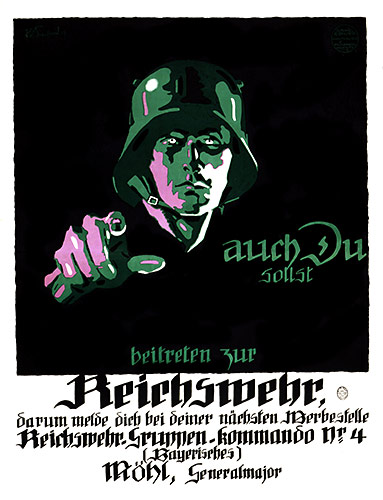Cubism was influenced by African tribal art to the human figure. The figures were abstracted into geometric planes, and classical norms for the human figure are broken. Most of the time, figures are shown from more than one viewpoint.
Here is one example I found, I could not find out who painted it or what the title is.

2.Define Futurism. Find an example that is not in the book.
Futurism was started as a revolutionary movement by Italian poet Filippo Marinetti. It caused all the arts and forms to be tested against the new realities of scientific and industrial society. Futurism was described as if it would leap and burst right through the pages. Three or four colors were usually used while twenty typefaces were used. They were freed from tradition and typefaces were pasted in non linear forms. It would sometimes take the shape of objects or religious symbols. This image was done by Natalia Goncharova in 1913. The title is called Cyclist.

3.Define Dada. Find an example not in the book.
Dada began as a protest against the first world war. The graphic works included chance placement and absurd titles. Artistic acts were usually done by matters of individual decisions and selections. Freedom was definitely tested in this period. Dada artists have claimed to invent "photomontage" which is the technique of manipulating found images. This image was done by Raoul Hausmann.

4. Define Surrealism. Find an example not in the book.
Surrealism shares some of the same ideas in the Dada movement. It began in France in 1924, and artists were searching for the "more real than real world behind the real", which was the world of intuition, dreams, and the unconscious explored by Freud. Unlike Dada, which showed negativity, Surrealism showed a poetic faith in man and spirit. Artists expressed a great deal of symbolism and fantasty. This image is done by no other than Salvador Dali and the title is called The Persistence of Memory

5.Define Expressionism. Find an example not in the book.
Expressionism emerged in Germany before WWI. It was described as "the tendency to depict not objective reality but subjective emotions and personal responses to subjects and events". Color, drawing, and proportion were often at times exaggerated or distorted. Symbolism was seen as very important in this period. Thick paint, loose brushwork, and bold contour drawings were used a lot. Also, Line and color were very pronounced and color and value contrasts were intensified. This image I found is titled Inside by Joseph Minton

6.Define Plakastil.
Plakatstil (poster style) is described as the reductive, flat color design school that emerged in Germany in the early 20th century. One of the artists that paved the way was Lucian Bernhard. After running away from home, he entered in a poster contest. At first it was rejected, but one juror loved it and convinced the rest of the jurors to re consider. He basically paved the way for simplification and reduction of naturalism into a visual language for graphic communications.
7.Post a WWI poster for the Allied powers not in the book. Define what they were trying to do with this poster.

This poster was a Canadian poster. It basically encouraged Canadians to enlist and help fight the war.
8.Post a WWI poster for the Axis powers not in the book. Define what they were trying to do with this poster.

This was a German poster for WWI. It's encouraging soldiers to enlist and fight in the war. The way the German soldier is pointing is quite similar to the Uncle Sam poster (figure 14-27).
9.Post one work by AM Cassandre that you find monumental and explain why

I really like this one because i like how abstract the composition is and I like how the typography is cropped.
1 comment:
Very nice!
Post a Comment